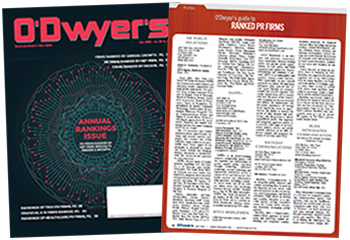 Arti Patel |
While many perceive influencers and thought leaders as actors fulfilling the same roles within the marketing ecosystem on the surface, they’re necessarily different. When deciding where to focus your marketing strategy, understanding the differences between the influencer and thought leadership approaches—and how they facilitate your business goals—is key.
These distinctions come down to two areas: their respective value propositions and preferred platforms.
Value proposition
While influencers’ value is rooted in quantity, thought leaders’ value is rooted in quality.
|
|
There are five main types of influencers—celebrities, macro-influencers, professional influencers, micro-influencers, and brand advocates—with each employed to bring about specific business outcomes.
Influencers’ worth is determined by the size and reach of their audience. As an influencer, your audience volume determines your power rankings, fees and standing within the professional hierarchy.
Conversely, thought leaders, especially of the C-suite variety, are judged on their business knowledge and subject-matter expertise. Often, these individuals are proactively looking to invest their time by sharing insights and intelligence for the benefit of their professional industry. Their ability to shift the momentum of an overall marketing plan is quite regularly undervalued, and often dictated by the types, and audiences of, the publications that feature them.
Preferred platforms
Because of their different value propositions—and goals—influencers and thought leaders warrant different platforms. Influencers, as marketers—or sellers—of their own personal brands, prefer more consumer-oriented platforms like Instagram and Facebook, while thought leaders—more likely to target business decision-makers—focus on LinkedIn.
While influencers speak to an audience of potential—and more direct—buyers, thought leaders speak to business decision-makers. So, when targeting a professional audience is paramount, LinkedIn’s 260 million active users worldwide represent an opportunity that can’t be overlooked.
Underlining this opportunity, LinkedIn itself has appointed official “influencers” from an ever-changing global collective of leaders and innovators like Bill and Melinda Gates, Arianna Huffington and Richard Branson to emphasize its focus on discussions around trending business issues.
So, what makes thought leadership so valuable right now?
A defined market
In an ecosystem dominated by influencer marketing, it then seems like the obvious tactic to prioritize within your broader marketing strategy. Nevertheless, today’s environment—which has created a strong-er public appetite for differentiated, forward-looking thought leadership—gives you reason to rethink that plan.
Trust inequality between the informed public and mass population is at a record high today, driving the creation of a large, underserved audience hoping to discover information on its own. While trust in social media as a news source remains low at 43 percent, trust in search and traditional media is at a historic high globally, both at 65 percent. This means there’s a market for executive thought leadership content, particularly published in traditional media outlets.
Benefit your bottom line
A recent study of B2B thought leadership impact noted that while decision makers on the whole are spending more time reading thought leadership content—at least one hour per week—some senior decision makers are actively willing to pay a premium to work with companies that have clearly articulated their vision via thought leadership content.
Further, the study also noted B2B marketers and salespeople significantly underestimate the positive influence of thought leadership content on demand generation and sales efforts. Execute this content correctly and it becomes an increasingly meaningful tool in your marketing arsenal, helping to encourage positive brand sentiment, as well as foster meaningful public discourse across your consumer base.
Digital platforms like LinkedIn play a role too, serving as a launch point to help C-suite executives create a demand for their expert opinions, especially on trending news topics ripe for public discourse and engagement. By sharing insights on industry happenings and/or publishing authored content, thought leaders can take advantage of an opportunity to drive conversation with colleagues, peers and customers about a host of topics.
If you engage in executive thought leadership, remember these four rules:
Identify your key audiences. Looking to directly reach consumers? Then implementing an influencer campaign might be the right choice. Otherwise, and especially if you’re hoping to engage with key business decision-makers, you’re best served by leaning into the thought leadership approach—and its core distribution channels like LinkedIn.
Always add value. The abundance of executive thought leadership and influencer content will continue to grow in the next few years. With a cacophony of voices growing in intensity, it’s not necessarily being first or loudest that matters most, but rather the quality—or originality—of those insights that have the biggest impact. Once your goal—and corresponding platform—is confirmed, you should conduct research into what’s already being said and identify ways your C-suite executives can rise above the fray and provide noteworthy insights to reinforce their business acumen.
Be consistent. Unlike influencer partnerships that are planned with a prospective end date in mind, thought leadership done correctly should only enhance and strengthen the relationship between the consumer and the brand over long periods of time. C-suite executives who participate should do so consistently. It will likely take several years to build up an engaged core audience, and the time investment is worth it.
Realness matters. Authenticity is key to the entire operation. Whether working with an internal team, outside counsel or going solo, a successful thought leader will always endeavor to remain true to his or her unique voice. The public will always detect and peel back a façade.
By installing an executive thought leadership plan, you stand to bridge information gaps between industry stakeholders through knowledge sharing, which gives you a direct opportunity to tangibly impact your bottom line.
***
Arti Patel is an Account Supervisor who works with teams across Bliss Integrated Communication’s healthcare, financial and professional services practice groups.



 Understanding the interconnected web of personalities, experts, organizations, executives and employees that add value to a brand and contribute to its success.
Understanding the interconnected web of personalities, experts, organizations, executives and employees that add value to a brand and contribute to its success. Does your PR firm have established and robust practices to ensure consumers can tell the difference on social media between commercial and editorial content?
Does your PR firm have established and robust practices to ensure consumers can tell the difference on social media between commercial and editorial content? Best practices for developing influencer marketing programs for chefs, restaurants and food and wine brands.
Best practices for developing influencer marketing programs for chefs, restaurants and food and wine brands. The online influencer marketing segment shows no signs of slowing down, according to research conducted by marketing company Open Influence.
The online influencer marketing segment shows no signs of slowing down, according to research conducted by marketing company Open Influence. TikTok has beaten out influencer mainstay Instagram to become the most popular social-media platform for influencer marketing, according to a new study.
TikTok has beaten out influencer mainstay Instagram to become the most popular social-media platform for influencer marketing, according to a new study.


 Have a comment? Send it to
Have a comment? Send it to 
No comments have been submitted for this story yet.